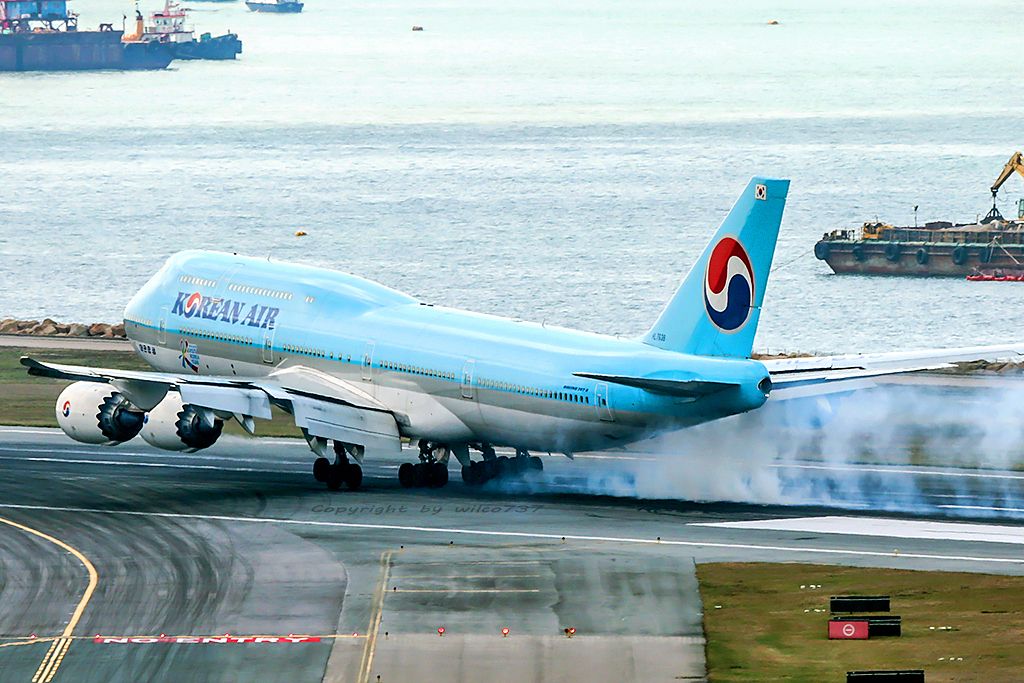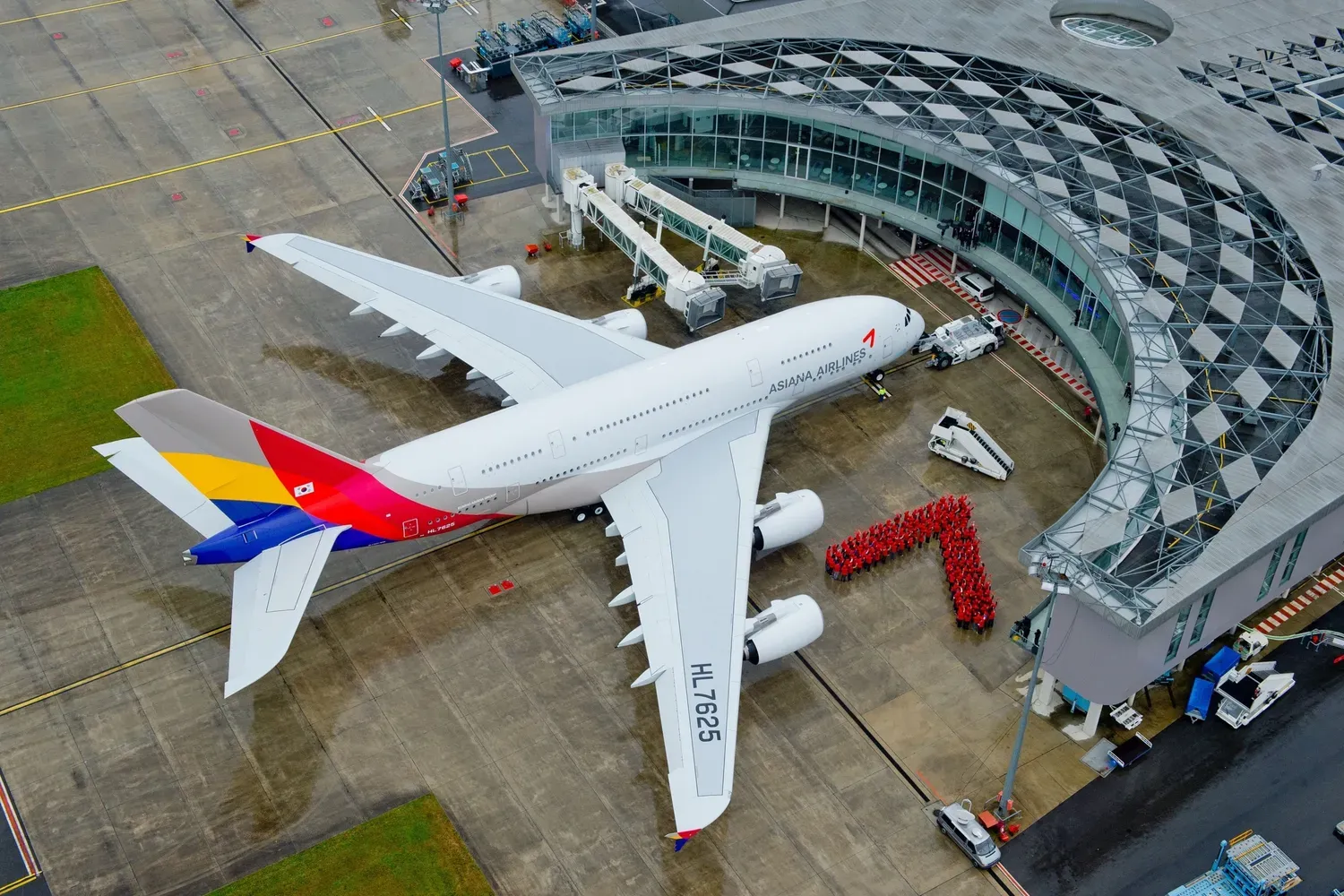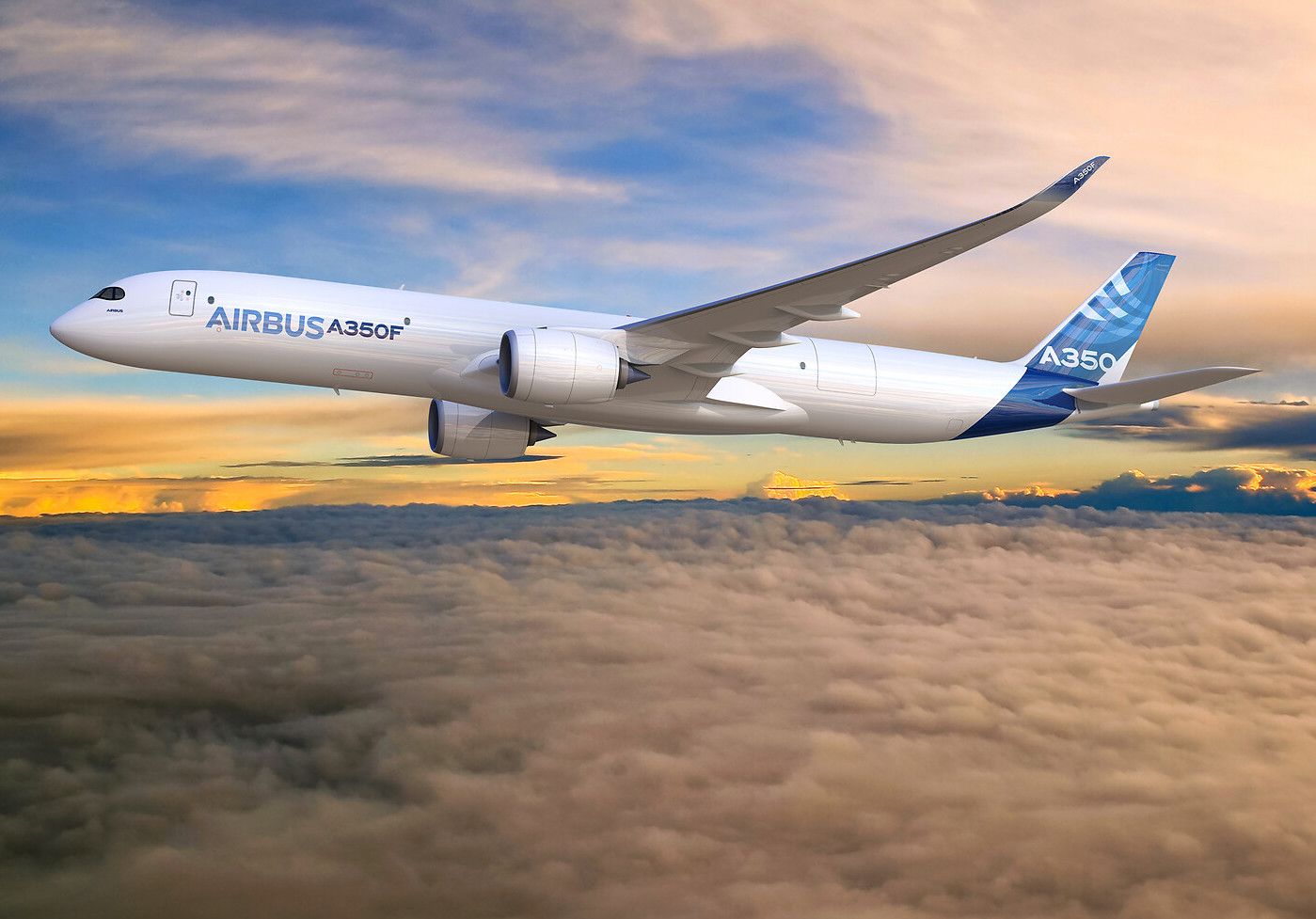Like many of the major legacy carriers we’ve covered in our fleet series, Korean Air’s collection of aircraft is incredibly diverse. Indeed, the carrier's aircraft go from the tiny Airbus A220-300 up to the mighty Airbus A380 superjumbo. But it’s not just Airbus jets being flown by Korean air as the airline also operates both narrowbody and widebody jets from Boeing - including the iconic 747. So today, let’s take a closer look at the 150-plus aircraft that comprise the Korean Air fleet.First off, it's worth mentioning that Korean Air's fleet numbers include a portion of aircraft operating exclusively for the airline's cargo division as well as its private charter business. We'll briefly mention these different jets, but mostly focus on the commercial passenger fleet.
An early customer for the Airbus A220
Starting at the smallest member of the fleet, we have 10 Airbus A220-300s with an average age of just over four years. Seating 140 passengers in a single class configuration, Korean Air was one of the first customers of the A220, back when it was still known as the Bombardier CSeries.
According to Aerotime Hub, the carrier placed a firm order for 10 CS300 aircraft, with options for 10 and purchase rights for an additional 10 in 2011. After waiting six years, the carrier took delivery of its first CS300 in December of 2017. Seeing as the airline still has just 10, it’s clear that the carrier has failed to exercise any of its options or purchase rights for the aircraft.
Interestingly, every two years, Airbus awards "the best operators" of its aircraft based on a thorough evaluation of factors such as flight duration, number of operated flights, and punctuality. And just last year, and for the first time ever, Korean air was named the "best Airbus A220 operator."
So how did the carrier win this honour? Well, from August 2020 to July 2021, the airline recorded an on-time performance of 99.63% for its A220 fleet, compared to the global A220 operators’ average of 99%.
The airline notes that a higher rate implies maintenance and safety system quality, and is gauged by measuring the number of flights that depart within 15 minutes of scheduled departure.
A diverse list of Boeing 737 variants
Moving up in size, Korean Air has 22 Boeing 737s. This sub-fleet consists of a number of variants, including the -800, -900, -900ER, and MAX 8. While the overall 737 fleet average age is nearly 13 and a half years. It's worth noting that Korean Air technically operates a single 737-700. However, this is a VIP configuration, which is interestingly available to use through the private jet charter website Victor.
Going back to the airline's average age figure of 13 years. This is slightly deceiving given the wide variety of variants. For example, the airline's 737-900 fleet of 10 aircraft is the oldest, averaging nearly 19 years. On the other end, its MAX 8 fleet of three jets is the youngest, averaging just over three years. But even the airline’s 737 MAX average age is a little deceiving, considering that the first MAX 8 was delivered to the airline in February of 2022.
As you may have guessed, delivery was delayed as South Korea only recertified the MAX in November 2021 following the type's extensive grounding. With a deal signed in November 2015, Korean Air has an order for a total of 30 737 MAX 8s, which are scheduled to be delivered between now and the end of 2028.
Soon welcoming the Airbus A321neo
Korean Air will accept yet another aircraft type in the coming months. In 2015, Korean Air signed a contract with Airbus for a firm 30 A321neo aircraft plus 20 options. The airline plans to operate the A321neo with a two-class full-service layout on regional services from this year. Services will include longer sectors to selected destinations in South East Asia.
Having selected the Pratt & Whitney geared turbofan (GTF) engine to power its A321neos, Korean Air has decided to open a P&W GTF MRO Facility In 2023 after its A321neos arrive.
Widebody twins: The A330, 787, and 777
When it comes to the carrier's widebody twin-engine fleet, Korean Air operates three types:
- The Airbus A330 (30)
- The Boeing 777 (53)
- and the Boeing 787 (11)
There is some variation within each type as the A330 divides to the -200 (eight) and -300 (22). Overall, however, the average age of the A330s now sits at just under 18 years.
The Boeing 777s further divide into four variants: -200, -300, -300ER, and the 777F. Like other carriers in the Asia-Pacific region, Korean Air was a customer for non-ER versions of the 777. These high-capacity aircraft lack the additional fuel tanks present in extended-range variants and are thus well-suited to efficiently operate shorter-range, high-capacity services between major Asian cities.
And finally, when it comes to the Boeing 787 Dreamliner, 10 out of the 11 aircraft are the mid-sized -9 variant. The 11th aircraft and "odd one out" is a -8 configured for VIP operations. According to the Korea Times, the jet is modified with reduced seating but includes a private living room, bar, and bedroom. Joining the VIP 737-700 as a private charter jet, Korean Air offers the jets to government and domestic and foreign companies.
Korean Air is expecting another 10 787-9s for its standard passenger services. Four have thus far been assembled and are waiting to be delivered. However, like other airlines we've covered, Korean Air's pending 787s have been caught up in Boeing's production issues - which will hopefully be resolved sometime this year.
Korean quadjets
Finally, in the Korean Air fleet we have 21 Boeing 747s and 10 Airbus A380s. When it comes to the Queen of the Skies, the airline operates four 747Fs and seven 747-8Fs for its cargo division, as well as nine 747-8i jets for its passenger operations. The average age of the 747-8i fleet is nearly seven and a half years. These passenger aircraft are slated to leave the fleet some time in 2031.
Korean Air also has a single passenger Boeing 747-400 in its fleet. Registered HL7465, this aircraft was used for VIP government services between 2010 and 2022. More recently, however, the South Korean government "returned" the aircraft to Korean Air, with the jet currently being stored in Busan (PUS). Given the fact that the carrier has already retired its other passenger 747-400s, it's likely that HL7465 will also be phased out.
As for the airline's 10 Airbus A380 superjumbos, Korean Air recently reactivated several of the jets for passenger service. At the moment, two of the 10 are active and flying out of Seoul Incheon (ICN) to the airports of Hong Kong and New York JFK.
While the A380 is back in regular operations, this won't be for too much longer as Korean Air plans to retire these aircraft some time in 2026. It was in 2021 that the carrier's leadership noted that the double-deckers would be leaving the fleet in five year's time.
Speaking to FlightGlobal last year, Korean Air CEO Walter Cho said,
"The A380s will be leaving Korean Air’s fleet within five years, and the Boeing 747-8I fleet will also follow suit within ten years."
It's worth noting that Korean Air's A380 will actually grow larger in the near future. This is due to the airline's upcoming merger with fellow Korean carrier Asiana. This lengthy merger process has yet to be finalized, but if and when the two airlines become one, Korean Air will absorb the Asiana fleet.
Asiana Airlines currently has six Airbus A380s, all of which are stored. As we noted in a previous article, the fleet of A380s operated by Asiana Airlines is younger, and have been used less than the jets in the Korean Air fleet.
What aircraft will replace the four-engined behemoths?
Given how much time Korean Air has given itself to phase out its high-capacity quadjets, it's anyone's guess whether the airline will go with aircraft from Airbus or Boeing. Indeed, 2018 saw a few media outlets speculating and reporting on the airline's tough decision, pitting the 777X against the A350. To date, we haven't seen the airline make any decision either way.
Stay informed: Sign up for our daily and weekly aviation news digests.
In more recent times it was reported that the carrier was considering the purchase of new widebody freighters to modernize its cargo operations. This would come down to a choice between the A350F and the 777X freighter. However, the airline's CEO noted that this decision would only be made once the carrier's merger with Asiana is complete.
What's your favorite aircraft in the Korean Air fleet? Share your thoughts and opinions by leaving a comment!
Sources: Planespotters.net, AerotimeHub, 50 Sky Shades, Victor, Korean Times

.jpeg)
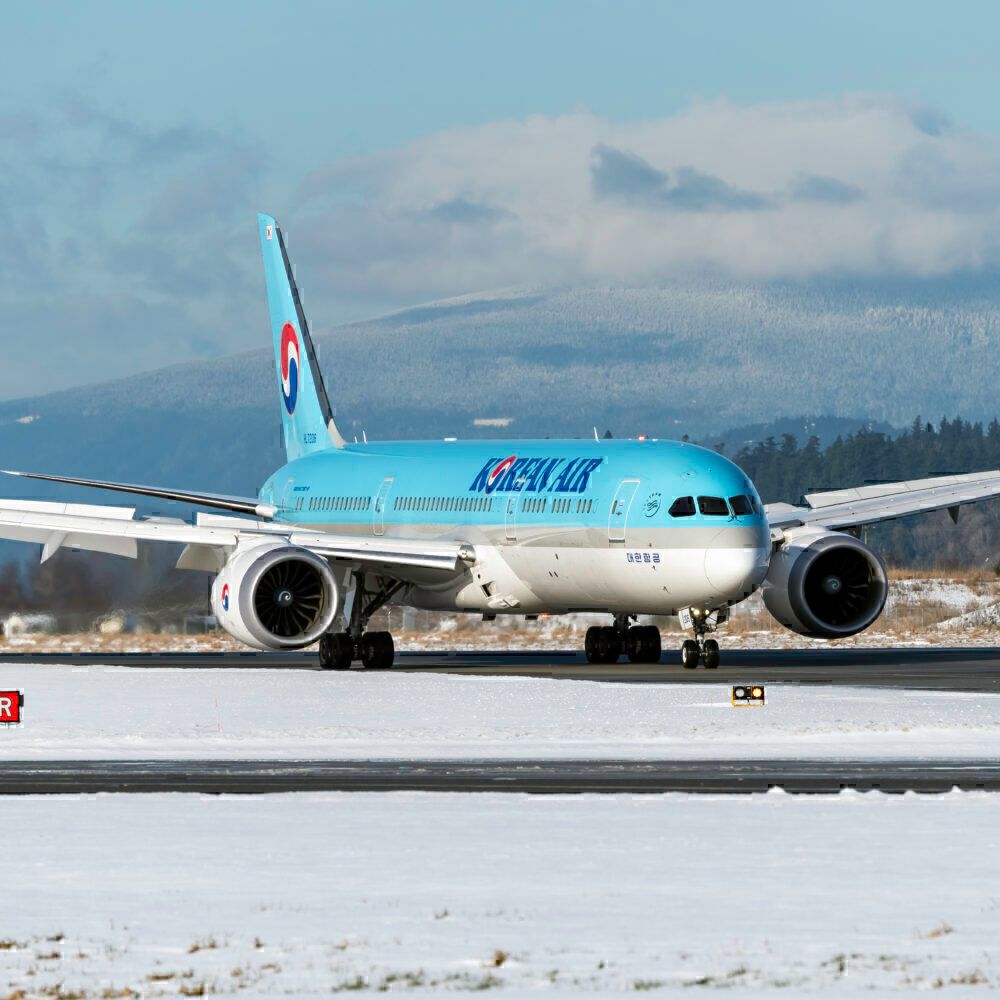
_at_Narita_International_Airport.jpeg)
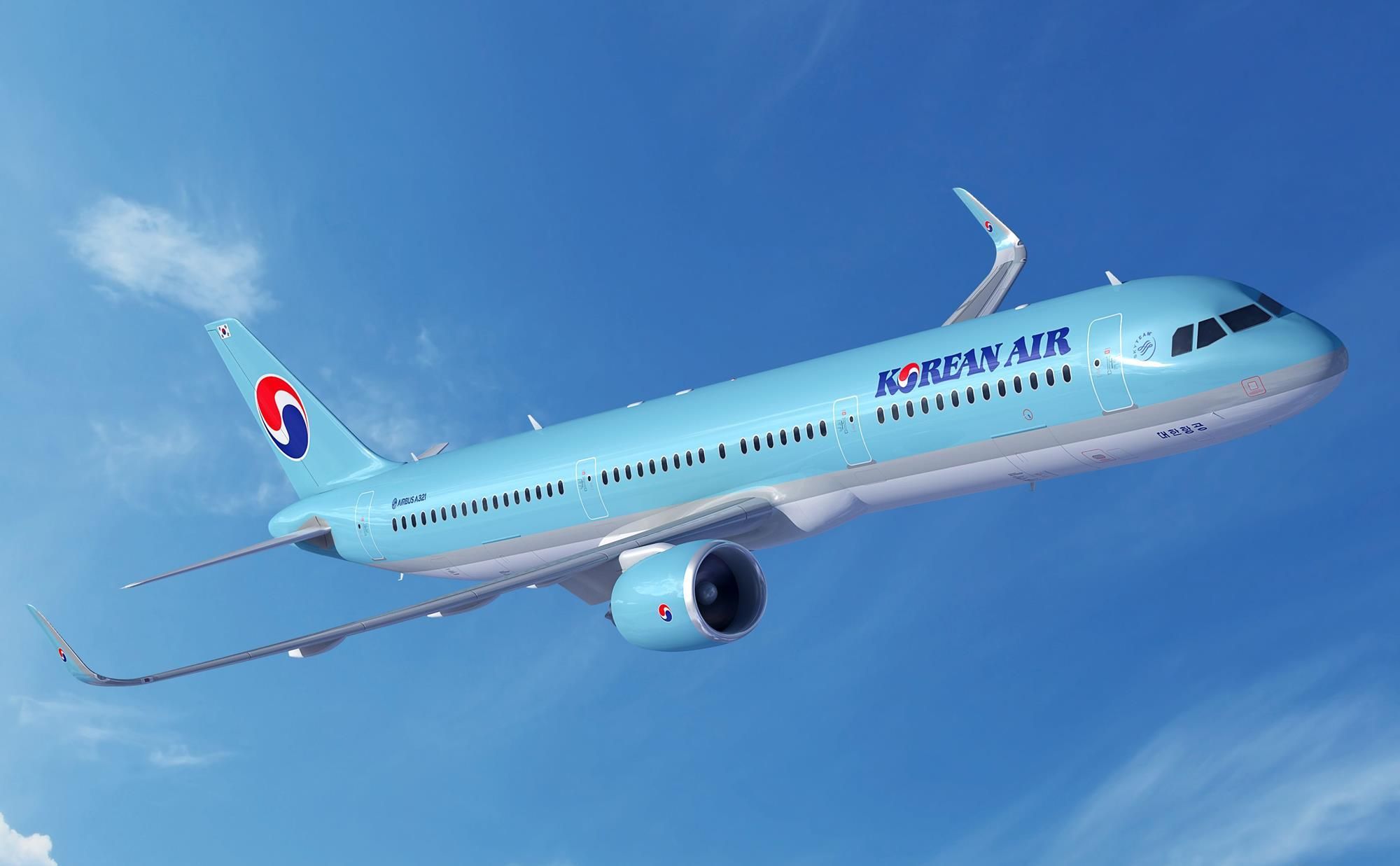
_(4836575029).jpeg)
